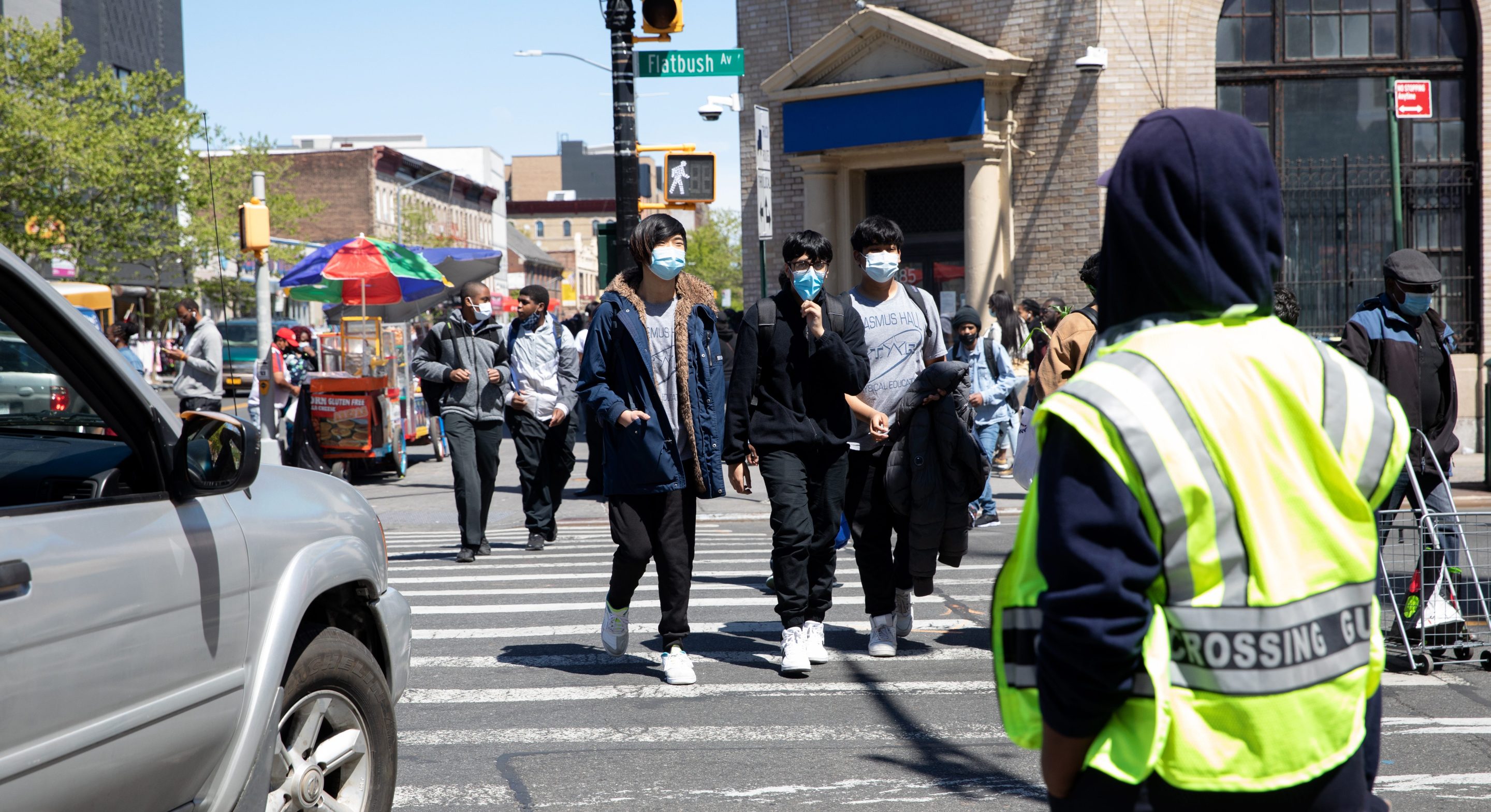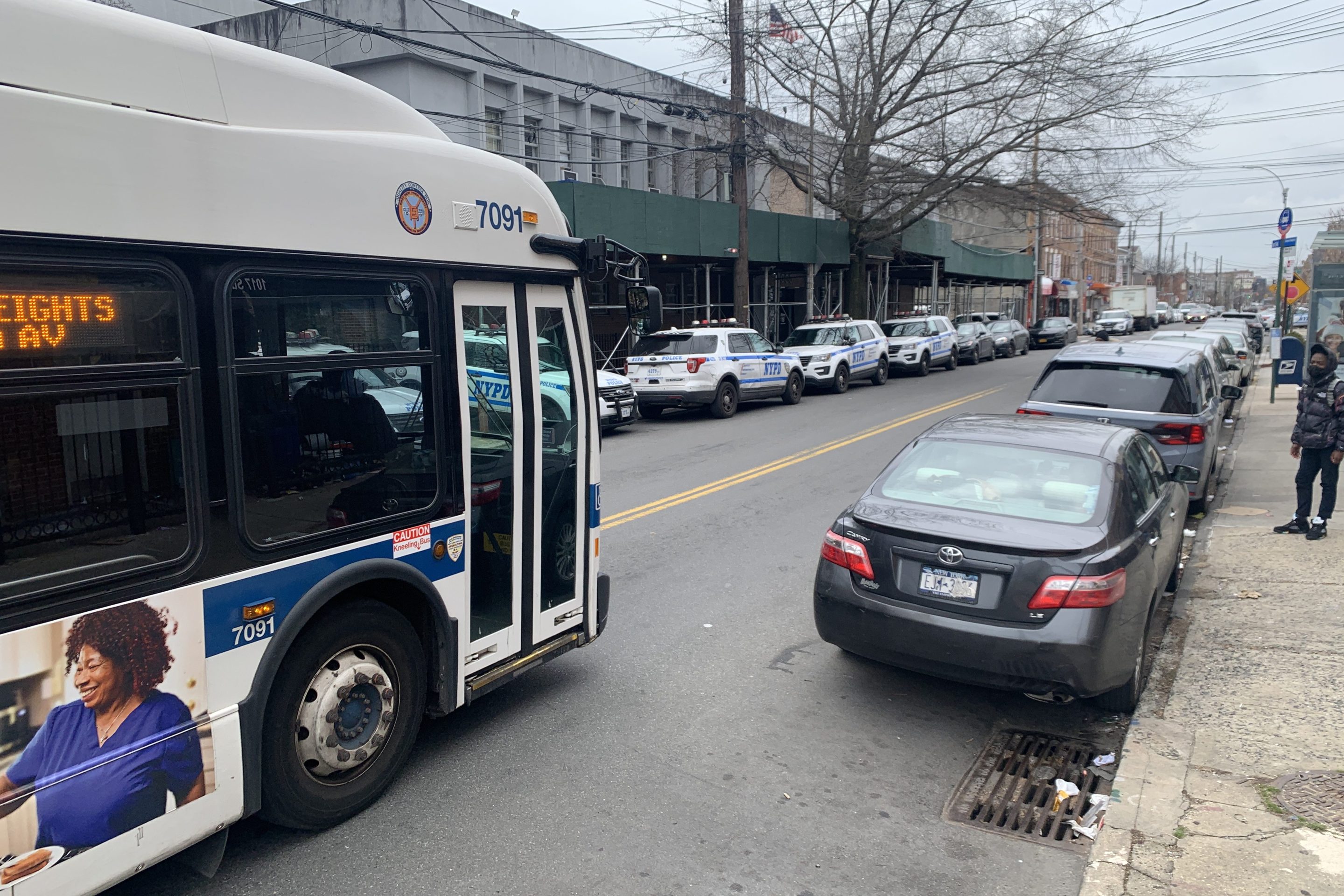One was hit so hard she flew out of her shoes. Another was punched in the face then struck by a driver in a Jeep. One landed on her head after being slammed into the air, two were thrown onto car hoods and at least five were run over.
Such is the damage that drivers have done to New York City’s lowly paid school crossing guards.
As thousands of guards returned to street corners across the city last week for the reopening of public schools, records obtained by Streetsblog reveal the dangers that guards face on the job.
The 660 pages of redacted workers' compensation claims and crash reports, acquired from the New York City Police Department through a Freedom of Information request, show that drivers have struck and injured 73 school crossing guards from 2012 to 2022. (The count does not include guards hurt on the job when they were not on foot.)
With a workforce in the thousands, the rate of injury is relatively low, and some injuries were minor. But many injuries were not: Drivers broke the bones of at least seven guards and knocked two guards unconscious. Another five guards suffered injuries from assaults on the job.
According to the records, the police charged fewer than one-third of the drivers who struck and injured guards – who are themselves NYPD employees – and nearly all those charges were minor traffic violations.
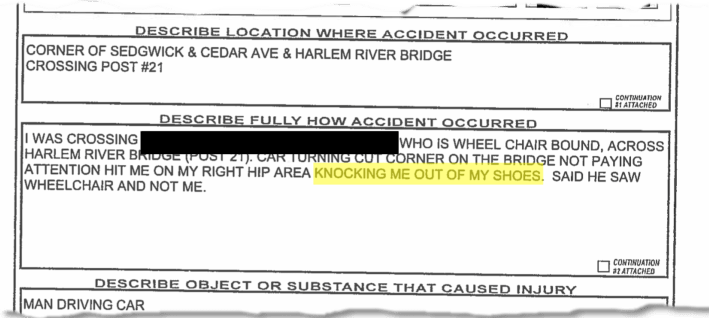
These statistics were not previously public, but they came as little surprise to longtime guards, who said harassment, close calls with drivers and seeming indifference from their NYPD superiors are facts of life on the job. The guards are overwhelmingly women of color, and their pay rate is just $18 an hour. The NYPD is cutting 18 percent of guard positions citywide this fiscal year to save money.
"Nobody actually respects us out there on the street,” said Denise Ferrante, who has worked as a guard on Staten Island for more than a decade and is the crossing guards chair for the Local 372 union. "It's a very dangerous job."
In theory, it shouldn’t be. The guards are posted on sidewalks and typically only venture out into the street when children are in the crosswalk, where pedestrians have the right of way during walk and flashing don't walk signals. And yet, crosswalks are where more than half of the injured guards were struck, the records show.
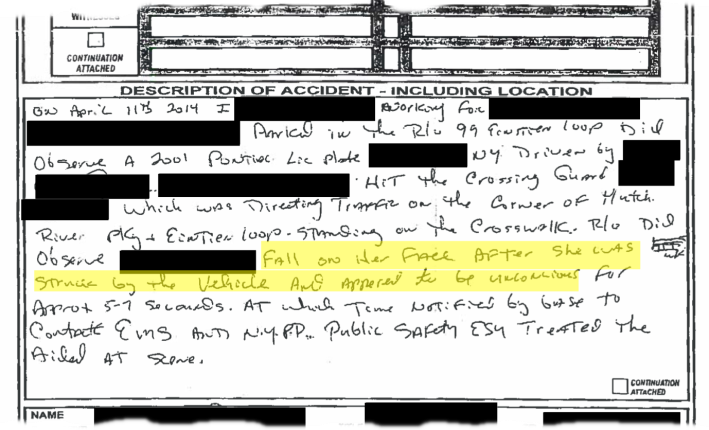
It was in a crosswalk in the Bronx in 2014 where a driver plowed into a guard from behind, pitching her body into the air and causing her to "hit the ground with her head first," police wrote in a workers’ compensation claim. She "appeared to be unconscious for approx 5-7 seconds," a witness wrote.
The driver told police she didn't see the guard, whose name was redacted in the records, as were all victims' names. The police did not ticket the driver.
Often the guards were hit while helping children and other vulnerable road users cross the street, like a Bronx guard who was knocked out of her shoes by a driver as she walked alongside a wheelchair user in 2013. Four years later, a guard suffered a gruesome injury in Brooklyn while helping a mother and child across the street.
"Bone popped out of her right lower leg when the vehicle hit her," the workers' compensation claim noted. That driver too told police he didn't see the guard.
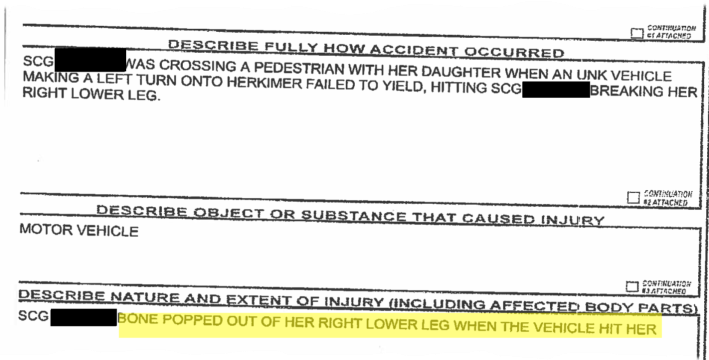
No guards were killed on the job from 2012 to 2022, according to the records, although city crossing guards have been struck fatally by drivers in the past.
Theresa Jefferson, a longtime guard in Queens, said the job has gotten more dangerous in recent years because drivers are behaving more and more recklessly on her corner in Jackson Heights.
“You see the same cars every day do the same thing,” she said, especially running red lights and making illegal turns. “It never was like that” before, she said. “But now, it’s terrible. They don’t stop at all, they don’t care.”
As for what’s changed, the answer to Jefferson was obvious.
“It’s the cars. The cars are the only thing that are out of control now.”
A map showing where New York City crossing guards have been struck and injured by drivers. Map: Jonah Schwarz
Guards are equipped with whistles and often use their hands to signal for drivers to yield. But in more than one-third of the injuries, motorists ignored such instructions before hitting guards.
One taxi driver, impatient with pedestrians in a Manhattan crosswalk, careened onto a curb to get around them and struck a guard.
The guard “told driver to stop three times,” the police noted of the 2019 incident. The cabbie then sped off – one of 31 drivers to flee after hurting a guard.
Drivers have menaced guards in other ways as well, the records show.
"I was crossing an elderly lady while a red vehicle came up to me, refusing to stop at stop sign and was literally touching my pants," one guard wrote of an incident in the Bronx in 2012. The driver called the guard a “bitch,” then “came out of the car and started punching and kicking me” before she “jumps back in car and hits me again."

The dangers faced by guards are a nationwide problem. In recent years, drivers have killed guards in Kentucky, Kansas, Arizona, California, Texas and elsewhere. According to the U.S. Bureau of Labor Statistics,11 crossing guards nationwide were killed on the job each year on average from 2003 to 2018. In 2019, crossing guards and flaggers had a higher on-the-job injury rate than stonemasons, animal trainers and crane operators, BLS data show.
In New York City, the 2021-2022 school year was the most dangerous one for guards in the period studied. One in every 230 guards was injured by a driver. That’s far higher than the average from the 2014 to 2019 school years: one injury per 393 guards.
Streetsblog submitted records requests to the nine other most populous cities in the country to see how their crossing guard injury rates compare. Only three cities provided complete data: Philadelphia, Los Angeles and San Antonio.
Philadelphia had a higher injury rate than New York: one injury per 49 guards each year on average from 2016 through 2022, excluding 2020, although the figures may include injuries that weren’t caused by vehicles.
In Los Angeles, the average was one injury per 187 guards from 2012 through 2022, although in three years there were no injuries, and in one year a crossing guard was killed.
San Antonio had a lower injury rate than New York, with only one guard injured by a driver since 2012.
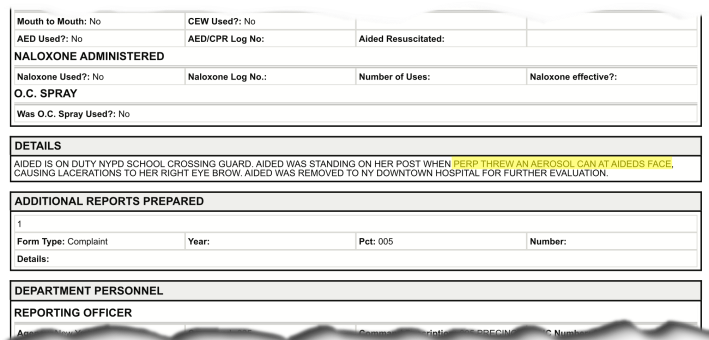
Whatever the rate, Shaun Francois, the president of the union that represents New York crossing guards, said no guard should be hit by drivers while working.
“They’re out there to do a job to protect our children,” he said. “Who’s going to protect them doing their job?”
Francois and guards interviewed by Streetsblog called on the city to do more to protect them, including by redesigning streets around city schools to make them safer.
A Streetsblog investigation last year found school streets in the city are uniquely dangerous, with higher rates of car crashes and injuries than other city streets on school mornings and afternoons. The disparity is even greater around schools that mainly serve poor students and students of color. Streetsblog further found that the Department of Transportation had typically made only modest changes to the design of unsafe school streets.
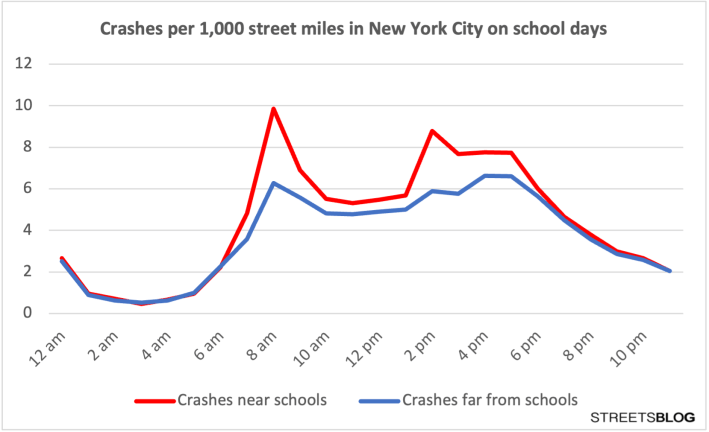
DOT spokeswoman Mona Bruno said the agency carried out 45 street improvement projects within 250 feet of a school last year, and the agency expects to complete a similar number this year. She also cited the agency’s school-zone speed cameras and the school Open Streets program, in which at least 62 schools will participate this year.
“We are focused on continuing to deliver these projects where they are needed the most,” Bruno said in a statement. “Mayor Adams is committed to keeping kids safe and protecting our most vulnerable road users.”
The city Law Department did not respond to a question about how much the city has paid out in workers’ compensation and legal judgments and settlements to injured guards.
The NYPD did not respond to questions from Streetsblog. In a statement, a spokesperson who declined to provide a name said: “School crossing guards are an integral part of the NYPD overseeing and controlling traffic flow around schools in the morning, at lunchtime, and at the end of the school day. School crossing guards serve their communities, while earning a competitive salary with family health insurance benefits.”
The guards recently received a pay raise to $18 an hour, and if they work 20 hours per week they receive health insurance.
With Jonah Schwarz
